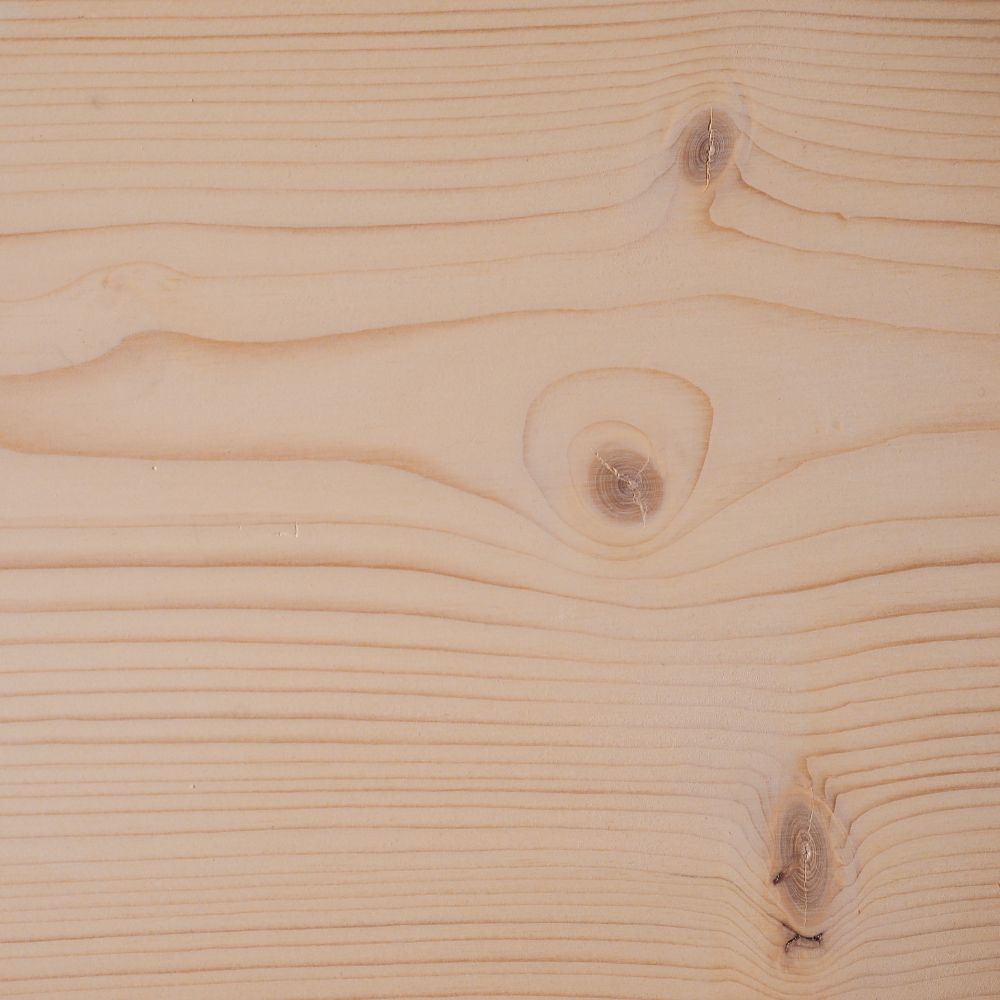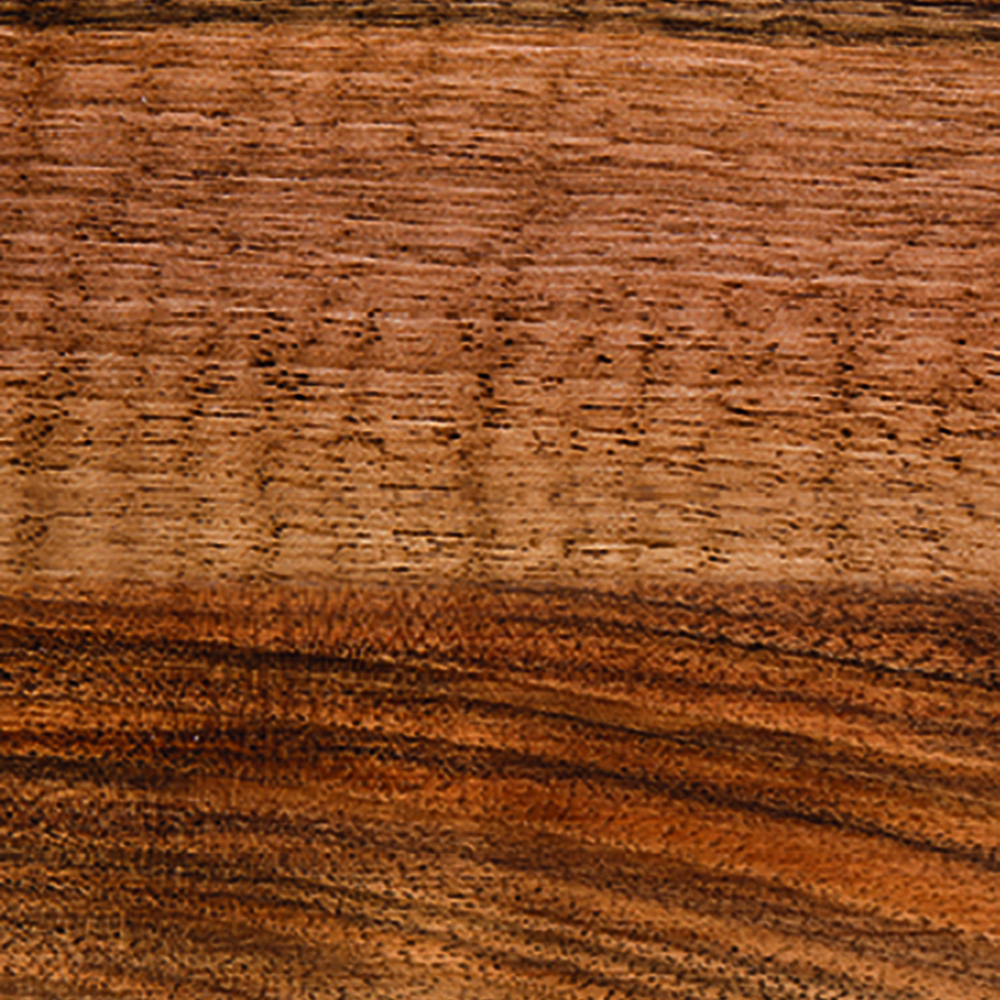Types of wood for furniture
Various types of wood are used for furnishings such as cabinets, tables, chests of drawers, etc. We will give you a brief overview of the most common types of wood used for furniture.

Maple
Maple is characterized by good machining quality and high resistance to wear and tear.
Maple wood is characterized by high strength and elasticity, but tends to crack. It is a medium-hard to hard wood and can be worked cleanly with all woodworking tools. Maple wood is not suitable for outdoor use, especially in damp locations, due to its lack of weather resistance.
Advantages of maple wood
- Very robust
- Easy to process
- Good environmental balance as domestic wood
In furniture making, it is used as solid wood, veneer or for decorative elements.
Due to its variety of colours, there are numerous design options for maple furniture, from very light to reddish to a matt medium brown.
Disadvantages of maple wood
- Not weather-resistant
- Tends to crack
- Warps quickly

Birch
Birch wood is a very light-coloured, hard and flexible wood that is widely used in Europe for the production of plywood, furniture and parquet.
Due to its hardness, birch wood is difficult to split, but is flexible. Birch wood is not particularly resilient and has a low load-bearing capacity. In addition to its great elasticity, birch wood is characterized by its low weight, toughness and wide range of processing options. The surface can be easily treated with varnishes, wood preservatives and glazes.
Advantages of birch wood:
- Inexpensive
- Very elastic
- Low weight
- Domestic wood, therefore good environmental balance
Domestic birch wood is an important material in the production of veneers and plywood. Other areas of use as solid wood are furniture and interior fittings.
Disadvantages of birch wood:
- Not weather resistant
- Tends to crack
- Low load-bearing capacity

Pear tree
The reddish pear wood is one of the hard types of wood. Pear wood is expensive as it is only found in small quantities that cannot meet demand.
As the colour and subtle grain of pear wood are particularly appreciated, it is usually only treated with transparent varnishes, glazes and oils or the colour-intensifying process of steaming is used.
Due to its lack of weather resistance, pear wood should not be used in unprotected areas.
Advantages of pear wood
- Attractive surface structure
- High strength
- Easy to work with
- Domestic wood, therefore good environmental balance
As the colouring and surface structure of pear wood are very attractive, it is used for high-quality furniture, panelling, panels or occasionally as parquet.
Disadvantages of pear wood
- Relatively expensive
- Not weather-resistant
- Low availability

Beech
Beech wood is a very strong wood that is even stronger than oak. It is mainly used in furniture making for the production of chairs.
Beech wood is characterized by its great hardness. As beech wood “works” hard, it warps quickly and has above-average shrinkage. This causes cracks to form easily in the beech wood.
Unprotected, beech wood is not weather-resistant. However, if the surface is treated with wood preservatives, beech wood can last a very long time outdoors, even under extreme weather conditions.
Beech wood is heavy, very tough, but elastic and strong.
Advantages of beech wood:
- Domestic wood, therefore good environmental balance
- Very hard, strong and durable
- Good elasticity properties
Beech wood plays a particularly important role in the furniture industry, for example in the production of seating furniture.
Disadvantages of beech wood:
- Warps strongly
- Tends to crack
- Heavy wood
- Hardly darkens at all

Oak
Oak wood is often used in house and furniture construction. Its durability, weather resistance and strength are particularly valued.
Oak woods are robust and known for their durability. They are weather-resistant and highly resistant to external influences.
Oak is a medium-weight wood, is very strong and warps little, but cracks quickly. Steaming makes oak wood soft and flexible. The surface of oak wood absorbs treatment with wood preservatives well and can be stained, glazed, varnished and smoked.
Advantages of oak wood:
- Long durability
- Robust
- Attractive surface
- Resistant to weathering
- Domestic wood, therefore good environmental balance
The strength of oak wood is valued in furniture construction, in the manufacture of paneling and floor coverings. Oak is the classic material for furniture in Germany. And: In this country, oak is mainly used to make solid wood furniture.
Disadvantages of oak wood:
- Cracks easily
- Can cause metals to oxidize

Spruce
Spruce wood is inexpensive. This is why furniture, building materials, paper and packaging are made from spruce today.
Spruce wood is soft, elastic and has a low weight. Although spruce wood can be dried quickly, hardly any cracks form. Spruce wood has a good load-bearing capacity, which makes it suitable for use as construction timber.
Without treatment with wood preservatives, spruce wood is not weather-resistant and quickly starts to rot, especially when it comes into contact with the ground. Surface treatments such as varnishing, staining or painting are possible without any problems once any resin residue has been removed.
Advantages of spruce wood
- inexpensive
- fast-growing
- versatile in use
- Domestic wood, therefore good ecological balance
Spruce wood is very important for constructions in the building industry, for example for roof trusses, ceiling beams or scaffolding.
Spruce wood is often used in solid form or in the form of wood-based materials for Scandinavian-style furniture and interior fittings. Particularly inexpensive furniture is often made from spruce.
Disadvantages of spruce wood
- not weather-resistant when untreated
- Not resistant to fungal and insect infestation
- susceptible to red rot

Pine
Pine wood is one of the most common native woods in European forests. Pine wood is one of the soft to medium-hard woods and is therefore very easy to work with.
It is elastic and does not break easily. In its untreated state, pine wood is not very weather-resistant and rots quickly on contact with soil. For this reason, treatment with wood preservatives considerably extends the service life of pine wood.
Pine wood is very sensitive to high temperatures and tends to leak resin. Products made of pine wood fade in sunlight and should therefore only be exposed to the sun evenly.
Advantages of pine wood
- Inexpensive
- Domestic wood, therefore good environmental balance
- Good processing properties
- Low weight
Pine wood is mainly used in furniture construction, for example for cabinets, tables or chairs as solid wood or as veneer.
Disadvantages of pine wood
- Not weather-resistant
- Susceptible to blue stain fungi
- Exposure to sunlight changes the color

Cherry tree
Cherry wood is a popular wood for furniture of various designs due to its attractive reddish-brown colouring.
The fine cherry wood belongs to the medium-weight woods, is very elastic, strong and has a higher shrinkage. Cherry wood is a popular wood for furniture of various designs due to its attractive reddish-brown colouring.
Advantages of cherry wood
- Attractive surface structure
- Domestic wood, therefore good eco-balance
- easy to work with
Thanks to its uniform structure, fine grain and attractive colour, cherry wood is particularly suitable for interior design and the manufacture of high-quality furniture.
Cherry wood is used for modern furniture because it combines well with light and dark woods and other materials.
Disadvantages of cherry wood
- Not weather-resistant
- tends to crack

Mahogany
Mahogany is considered a particularly noble and elegant tropical wood. It is durable and very weather-resistant, which is why mahogany is mainly used for luxurious furniture and interior fittings.
Mahogany plants, whose scientific name is “Meliaceae”, are mainly found in the tropics. Red-brown mahogany wood from Central America and the Caribbean is protected and may only be traded under certain conditions.
Advantages of mahogany wood
- weather-resistant
- durable
- Noble appearance
- Resistant to external influences
- warps only minimally
Mahogany is one of the harder hardwoods and is highly resistant to fungi and insects. It is therefore ideal for garden furniture and outdoor flooring.
Mahogany plays a central role in furniture making. Furniture such as desks, sideboards, side tables and cabinets are made from mahogany.
Disadvantages of mahogany wood
- Relatively expensive
- Surface must be treated
- Tropical wood, therefore poor environmental balance

Nut tree
Nut tree is a dark brown, vividly grained precious wood and is primarily used for exclusive interior fittings, furniture and parquet flooring.
This precious wood is hard, tough and not very elastic, but flexible. Surface treatments are very well absorbed. It is a heavy, dimensionally stable wood that warps little and is very durable and resistant to wear thanks to its hardness.
Nut tree is only moderately weather-resistant, but is resistant to fungal attack. Nut tree is not very resistant to insects and is therefore not well suited for outdoor use.
Advantages of nut tree wood
- Decorative surface structure
- easy to process
- Dimensionally stable and hard-wearing
Nut tree is a precious wood and is used in upmarket interiors. As solid wood is very expensive, veneers are usually used.
In furniture construction, nut tree is preferred for bedroom and living room furniture.
Disadvantages of nut tree
- expensive
- Not weatherproof
- Low availability as domestic wood

Teak
Teak is a robust and weather-resistant tropical wood with a beautiful appearance that is suitable for both indoors and outdoors.
Teak comes from Asia and is found in the forests of India and Burma. It is one of the most valuable and oldest woods there.
The surface of teak has a slightly oily feel, as teak contains pure rubber. Teak is particularly resistant to fungi, insects and chemicals.
In terms of hardness, strength and density, teak has similar properties to oak. Teak can also be used in damp environments and is weather-resistant.
Advantages of teak
- weather-resistant
- high strength
- robust
- Resistant to external influences
- warps only minimally
- attractive grain
Teak is durable and resistant to external influences. Teak is therefore ideal for garden furniture such as garden chairs or a robust garden bench.
Disadvantages of teak
- relatively expensive
- Poor environmental balance

Walnut
Walnut wood is considered the finest native wood. It is therefore used for upmarket interior fittings and furniture.
Although walnut wood is very valuable, the tree is rarely cultivated in forests for timber production. Walnut wood comes primarily from fruit trees felled on plantations.
Among the native woods, walnut is one of the heavier woods and is very hard and strong. It is excellent for staining, matting and polishing. Walnut wood is not particularly weatherproof outdoors, but is resistant to wood-decaying insects
Advantages of walnut wood
- Attractive colour and grain
- easy to work with
- alternative to tropical wood
- Domestic wood, therefore good ecological balance
As walnut wood is one of the most exclusive domestic woods, high-quality products such as furniture for upmarket interior design are made from walnut wood.
Disadvantages of walnut
- expensive
- Low availability
- not weatherproof